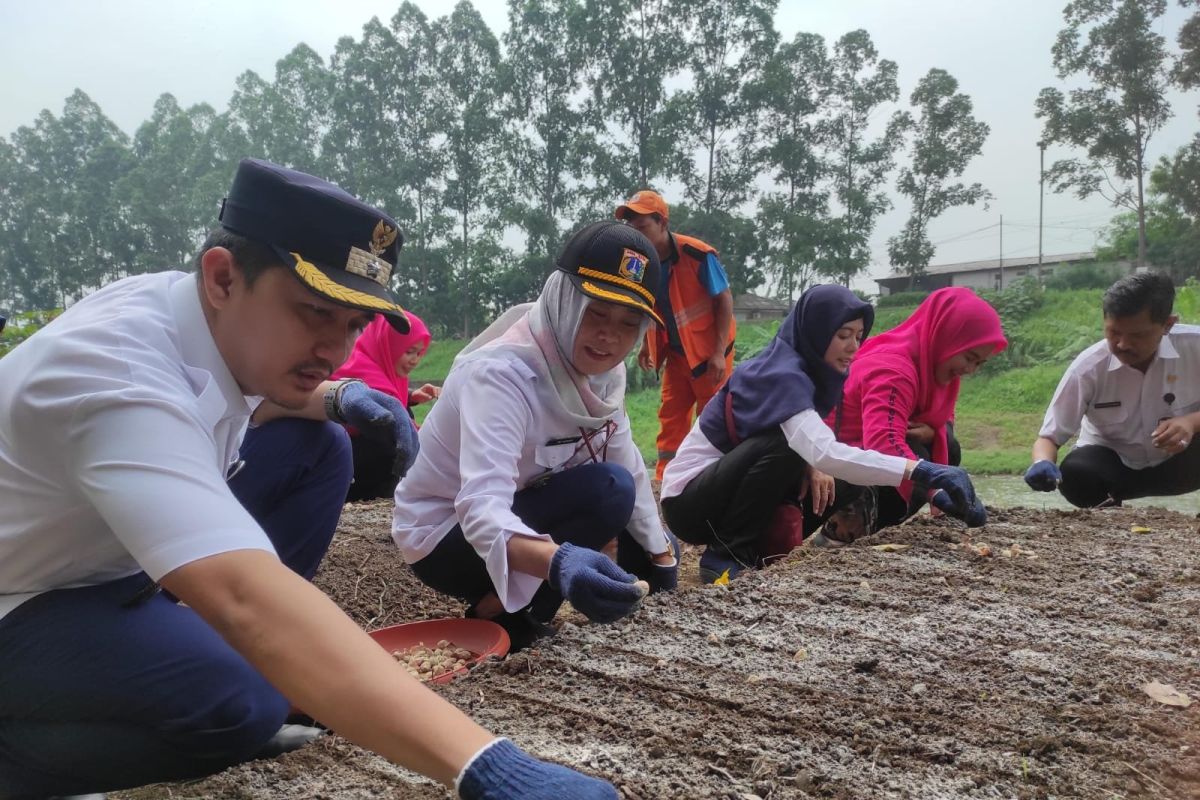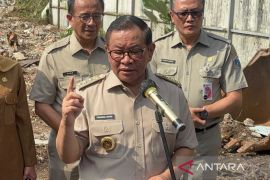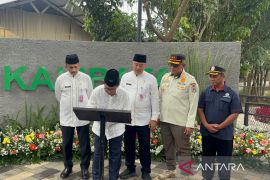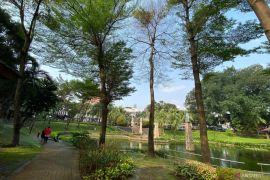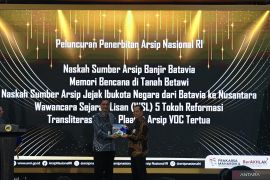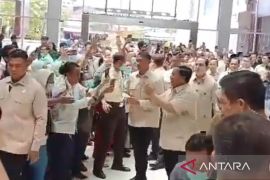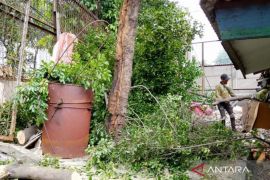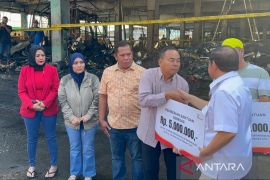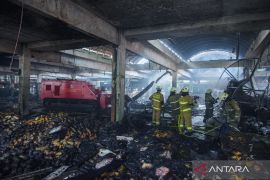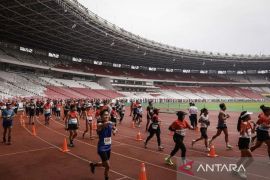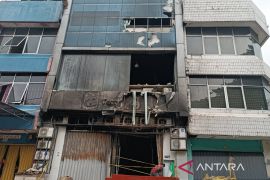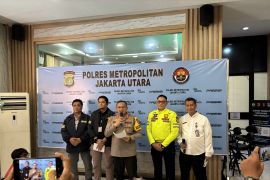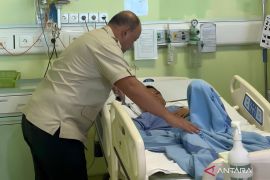Myriad benefits offered by RTH include acting as the lungs of the city, lowering air temperature, providing a cool atmosphere, and beautifying urban planning spaces.
The use of RTH was regulated in Law Number 26 of 2007 which states that around 30 percent of urban areas must have RTH.
Pondok Kopi Sub-district in Duren Sawit District, East Jakarta, has participated in the success of the RTH program by utilizing green land that has been used as a park or land for productive reforestation.
Deputy Head of Duren Sawit District, Sri Sundari, remarked that the use of green land was a matter of concern for Duren Sawit along with the sub-district heads.
"We utilize empty land that has not been used by the government or the community," she noted.
Duren Sawit has a Tancap Duit program (Planting Chillies, Onions, in Duren Sawit) along the East Flood Canal (KBT) and is expected to support the economy of the surrounding community as well as utilize the green land.
Sundari intends to continue to expand the use of green land apart from what currently exists in child-friendly integrated public spaces (RPTRA), sub-district offices, sub-district offices, and several places of worship, including mosques, prayer rooms, and churches.
"We plan to expand into the H. Dogol area and empty land that has not been utilized,” Sundari remarked.
Each sub-district has a location for Arrangement of Leading Points, a government's program in the form of utilizing unorganized green land, and every year, the arrangement is carried out at four locations.
During the 2022-2023 period, seven sub-districts in Duren Sawit organized empty land every three months, thereby bringing the total to 56 locations.
"This year, there was one additional location," she revealed.
The harvests from the green land in Duren Sawit comprise chillies, onions, tomatoes, and eggplants, and each sub-district produces a different harvest.
"The point is around kitchen needs because one of the goals of this program was to support the community's economic growth," she affirmed.
The people and small traders usually buy the harvested produce, as the price is cheaper than the market price.
According to Sundari, the use of green land in Duren Sawit is not only for food but there was also a garden containing ornamental plants, a butterfly enclosure, and a reading corner.
"There is also a mini zoo containing birds and fish in Pondok Kelapa Sub-district," she pointed out.
Sundari remarked that along with Pondok Kopi Sub-district, she plans to launch the BONCARA JAYA program, namely Abon Cabai Rawit Rawa Jaya, which is one of the innovations from the harvest.
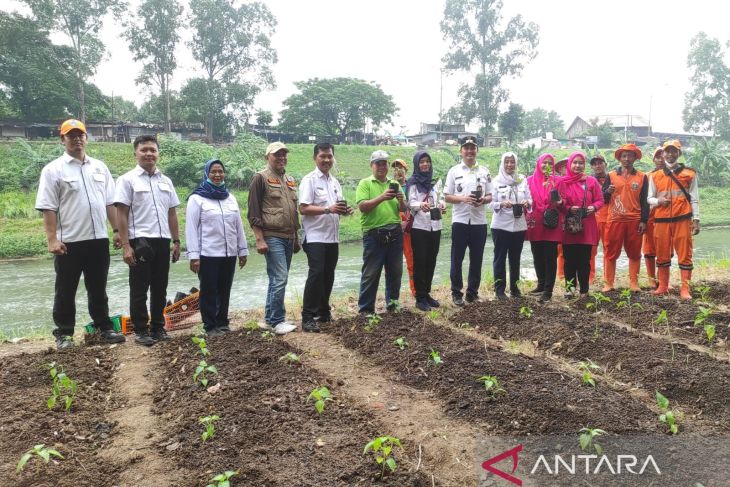
"By harvesting chillies, it means we can contribute to preventing higher regional inflation in the future," he remarked.
Earlier, Pondok Kopi had harvested vegetables, such as kale, bok choy, water gourd, and eggplant, which had a faster harvest time of around every two to three weeks.
Productive plants of chilies, onions, kale, bok choy, water gourd, among others, are grown at Rawa Jaya's RPTRA, Arabica's RPTRA, Peson RPTRA, and recently, on the side of KBT, he remarked.
So far, around four green fields are in the production stage, one of which is Rawa Jaya's RPTRA that produces a chilli harvest almost once a week.
"At the Rawa Jaya RPTRA, 39 chilli harvests occur, with a total of around 200 kg," Ananda remarked.
The chilli harvested at RPTRA is meant for distribution or sale to the local community and offered at a price that is much cheaper than the market price.
For instance, when the price of chillies in the market reaches Rp90 thousand-100 thousand, the RPTRA chilli harvest is sold for Rp50 thousand per kilo.
"The chilli harvested in Pondok Kopi has quite good quality. The spiciness is extraordinary. The harvest is also extraordinary," Ananda remarked.
Ananda said that currently, he will conduct extensification of green land in KBT, which has quite a large land to be utilized.
Land use in the Pondok Kopi area, as stated by Sundari, is not just for productive land but also for land that has aesthetic value and can be enjoyed by residents.
Local communities are expected to maintain cleanliness on green land and replicate or duplicate the implementation of the green land utilization program.
Ananda said he would be more aggressive in providing information about green land utilization programs to the community.
KBT is fertile land, but the planting and seeding process requires special handling, such as good planting media and the application of humus fertilizer.
"Actually, it is easy to use animal waste and weathered plant remains into fertilizer. We have done it, and there is no need to buy it," he remarked.
According to Ananda, community members must possess the knowledge, so that the planting program is not in vain and becomes more productive in future.
Moreover, one of the family welfare empowerment (PKK) cadres in Jatinegara Sub-district, Cakung, Jamila, remarked that the use of green land in her area resulted in the harvests of plants, such as kale, mustard greens, and spinach, with one harvest reaching almost 20 kg.
Currently, in this region, the focus is more on vegetables than chillies.
"Once there were chilli and corn plants, but people lost them because the garden was on the side of the road," she said.
The same was also observed at the other place, with the harvest usually being bought by local residents.
Apart from vegetable plants, there are also Toga plants (family medicinal plants), such as ginger and aloe vera.
Jamila expressed hope that the use of empty land would provide an example to local residents to boost their income in addition to the harvest being useful in their daily lives.
"The obstacle is capital to purchase seeds, fertilizer, and plant care. (This is) so that, in our environment, we only have light plants," she remarked.
According to Jamila, the use of green land in other areas in Cakung District also produces crops, such as grapes, cayenne peppers, and strawberries.
Jamila admitted to supporting the government's green land utilization program, as apart from beautifying the area, green land can also provide opportunities for residents to be creative in the food sector.
Related news: President advises households to grow food to meet own needs
Related news: Chilli farmers, industry must collaborate to stabilize price
Editor: Arie Novarina
Copyright © ANTARA 2024
